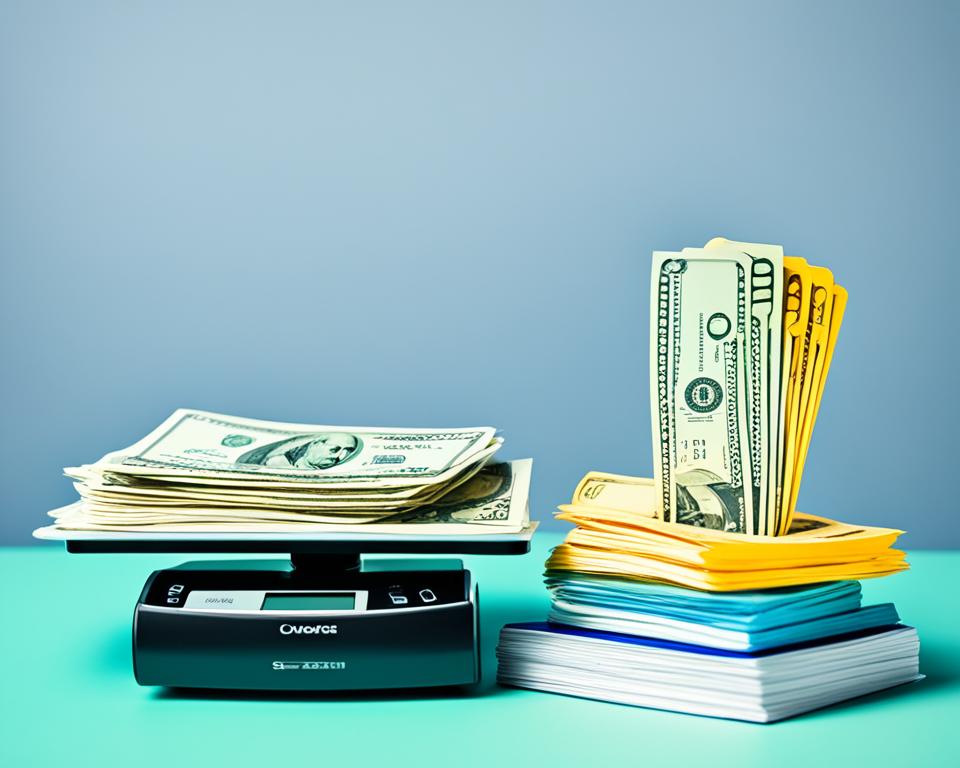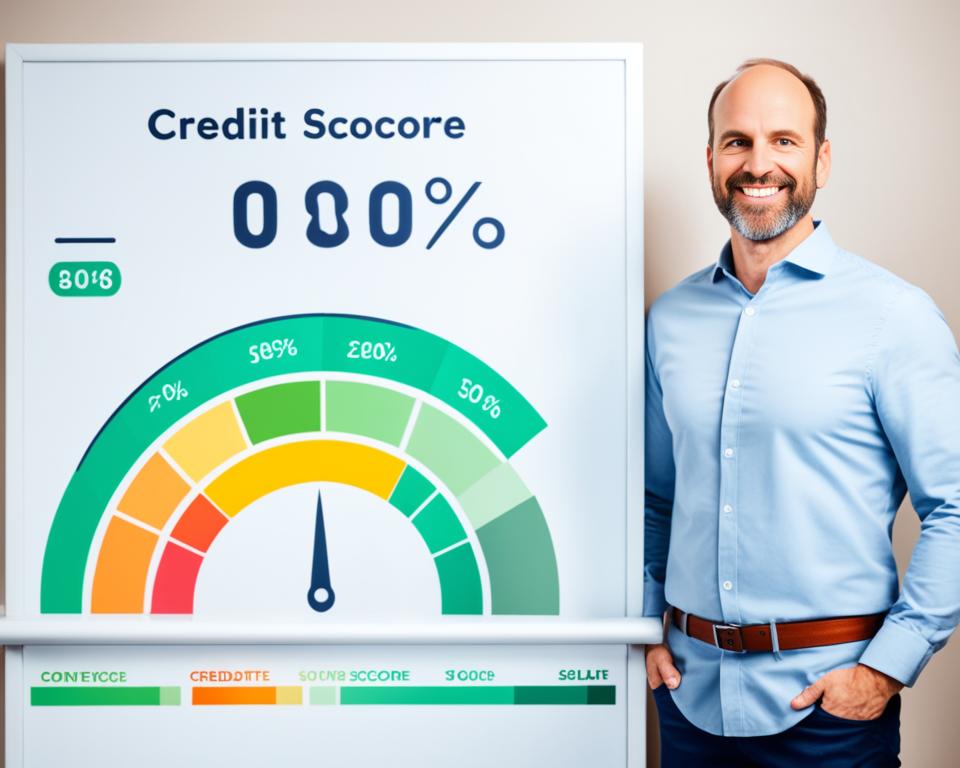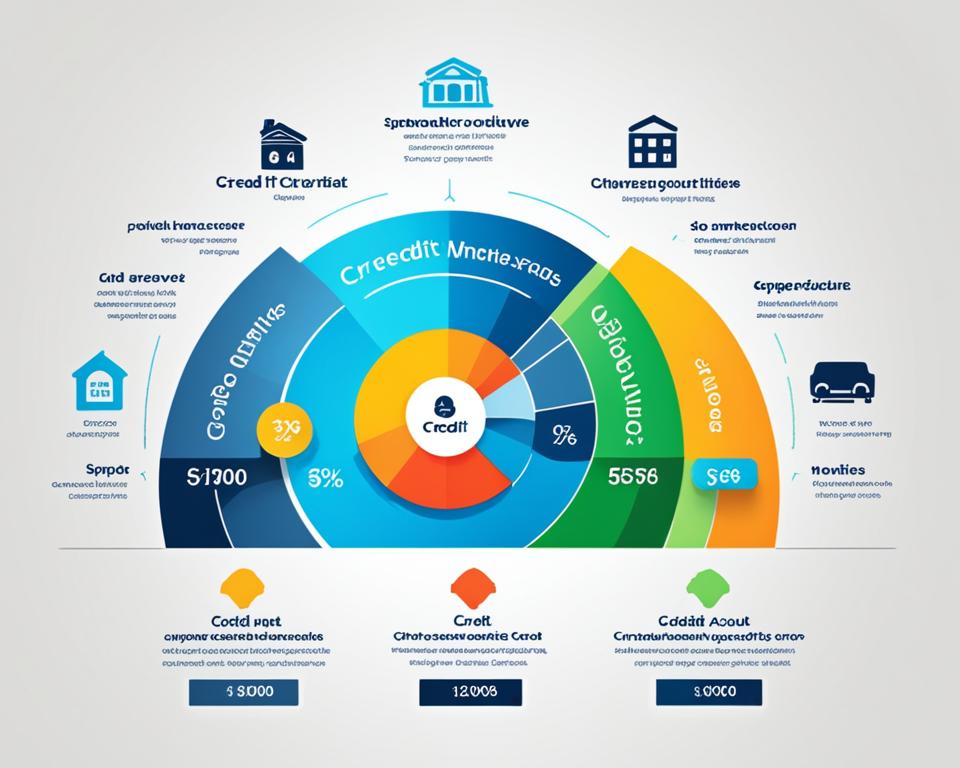The specter of bankruptcy often conjures thoughts of financial devastation and a future mired in credit invisibility. However, while the impact of bankruptcy on your credit is significant, its stigma does not render one’s fiscal identity irredeemable. For those navigating this challenging landscape, recognizing the trade-offs is essential. Bankruptcy may cleanse overwhelming debts but simultaneously casts you as a higher credit risk, a narrative borne out in the substantial dip in credit scores that typically follows. But this is not the end of the credit journey.
In certain scenarios, individuals witnessing the withering of their credit scores find solace in bankruptcy as it has the potential to expunge negative mementos from financial missteps, actually boosting scores in some cases. Conscious of the long-term effects, potential lenders will still be eyeing your credit score closely for 7 to 10 years post-bankruptcy filing. Despite this, the seeds of credit rehabilitation can be sown immediately with disciplined financial strategies, starting a new chapter in re-establishing creditworthiness.
Key Takeaways
- Bankruptcy does not eternally mar financial history, but repairing your credit score requires time and effort.
- While a downgrade in credit score is common, bankruptcy could potentially raise scores for those already facing low ratings.
- The proverbial fallout of bankruptcy varies based on the type, with effects lingering on credit reports for up to a decade.
- Immediate steps towards financial amendment can help in restoring creditworthiness, possibly within two years.
- An individual’s FICO score plays a critical role in determining future credit opportunities and the terms of borrowing.
- Bankruptcy effects on credit score are multifaceted, with the potential for both short-term drops and gradual recoveries.
- Understanding the dynamics of bankruptcy’s impact equips individuals to cultivate a resilient financial future.
The True Financial Implications of Bankruptcy
Bankruptcy’s influence on a credit score pivots not just on the act of declaring bankruptcy, but also on a series of subsequent financial activities and pre-bankruptcy credit health. When one navigates through the complexities of filing for bankruptcy, the credit impact of declaring bankruptcy can vary substantially based on individual circumstances. For many, the decision to file for bankruptcy is an arduous one, largely because of its portentous implications on credit ratings—FICO scores dip significantly, reflecting a person’s newfound credit risk to potential lenders. A FICO score, which ranges from 300 to 850, becomes critically important in this context, as a lower score might preclude access to favorable credit lines or loans.
However, the degree to which bankruptcy affects an individual’s financial standing hedges on the mix of their credit activities post-filing. For some, bankruptcy can lead to an acute declination of credit score, sending ripples through their capacity to borrow, while for others, careful financial management post-bankruptcy can help mitigate long-term consequences.
| Type of Bankruptcy | Years on Credit Report | Potential Credit Score Impact |
|---|---|---|
| Chapter 7 | 10 | Significant Drop, Recovery Contingent on Post-Bankruptcy Financial Management |
| Chapter 13 | 7 | Varies, Potential Gradual Recovery Post-Discharge |
The impact of bankruptcy also strongly correlates with how much debt was discharged and the relative number of positive to negative accounts active on your credit file. The ‘reset’ in terms of late payments and credit card utilization might initially seem like a clean slate, but it’s important to recognize the extent of the effect bankruptcy has on your credit score as a significant marker for your future borrowing capabilities.
“Bankruptcy is not a financial death sentence. While it does lower credit scores and impacts borrowing decisions of lenders, responsible financial behavior post-bankruptcy can slowly resurrect a credit score.”
By viewing bankruptcy as a financial reset rather than a permanent scar, individuals can make informed decisions about their debt and craft a strategy that aligns with their long-term financial health. It’s worth noting, however, that filing for bankruptcy should be a well-thought-out decision, one that considers the extent of its influence on credit scores and the credit impact of declaring bankruptcy.
Expert analysis also suggests that understanding the specific nuances of how a bankruptcy filing can affect your credit score may aid in better financial planning to counter the negative credit impact over time. As such, individuals must acknowledge and prepare for the repercussions of a bankruptcy declaration not just in the immediate aftermath but over the full course of the 7 to 10 years that it can weigh on a credit report.
Ultimately, the true financial implications of bankruptcy are as much about navigating the immediate credit score turbulence as they are about charting a careful course through the oncoming fiscal waters.
Bankruptcy’s Tradeoff: Debt Relief vs. Credit Risk
Declaring bankruptcy can provide immediate financial relief but also initiates a complex journey that significantly affects one’s credit. It embodies a stark tradeoff, casting a long shadow on credit ratings and presenting challenges that underscore the importance of understanding the bankruptcy impact on credit rating and the bankruptcy consequences for credit. The path to redemption involves not just the elimination of debts but also a strategy to rebuild the trust of prospective lenders.

The Journey of Your Credit Score Post-Bankruptcy
Once bankruptcy is declared, credit scores may take a dive in reflection of the heightened risk profile attributed to the individual. However, this journey isn’t static; it evolves with each financial decision taken thereafter. The dip in credit score is often not merely an immediate repercussion but a starting point for restructuring and managing personal finances with greater vigilance. Over time, diligent financial behavior can facilitate a healing process, steadily lifting the credit score from its nadir.
It’s a common misconception that bankruptcy means hitting a financial rock bottom from which one cannot recover. On the contrary, with a conscientious approach to debt management and spending habits, individuals can see their credit scores improve, despite the recent bankruptcy. This recovery demands attention to renewing consistency in bill payments and strategic credit use—behaviors highly valued by credit reporting agencies.
Longevity of Bankruptcy on Your Credit Report
While bankruptcy offers immediate relief from the claws of debt, its stain on a credit report is enduring. The duration of its impact hinges on the chapter under which bankruptcy is filed. A Chapter 7 bankruptcy remains on credit reports for a decade, serving as a continual reminder to creditors of past financial woes. Chapter 13 bankruptcy, in contrast, has a slightly less daunting presence, remaining on credit reports for seven years following discharge.
| Bankruptcy Type | Ideal For | Credit Report Duration | Post-Bankruptcy Recovery Steps |
|---|---|---|---|
| Chapter 7 | Discharging most debts | 10 years | Secured credit cards, budget management |
| Chapter 13 | Repayment plans | 7 years | Timely payment plans, credit builder loans |
No matter the chapter, the implications of bankruptcy echo throughout a debtor’s financial chronicle, influencing borrowing opportunities and terms of credit. The commitment to financial prudence post-bankruptcy is a testament to one’s resolve to overcome the phase of fiscal struggle and embark on a steady climb back towards creditworthiness. This careful delineation of the bankruptcy experience enables those grappling with debt to apprehend the long-term implications and strategies pertinent to their economic revival.
Unexpected Credit Score Boost Post-Bankruptcy
Commonly, bankruptcy is associated with a negative connotation when it comes to one’s credit score. However, in certain circumstances, individuals may experience an unexpected lift in their credit rating after filing for bankruptcy. Such an occurrence is particularly noted amongst those who have scores in the low 400s to 500s.
For debtors submerged in high amounts of delinquent accounts and aggressively accumulating interest rates, bankruptcy can serve as a sort of financial reset. By wiping the slate clean of numerous derogatory marks, one’s credit report might emerge less tarnished than before the bankruptcy declaration.
Its Rarity and Associated Factors
The phenomena of a post-bankruptcy credit score increase is indeed rare yet feasible under specific conditions. Much depends on individual financial history and the severity of credit status prior to bankruptcy. Typically, an individual grappling with numerous defaults, collections, and high credit utilization might observe an increment in their credit score post-bankruptcy.
Bankruptcy can clear the accumulated negative items from one’s credit report, leaving the credit score with potentially fewer detractions. This phenomenon can result in an increase in the credit score, although this is not a guaranteed outcome for every individual facing bankruptcy.
Understanding the Conditions That May Lead to an Increase
While the thought of a credit score increase post-bankruptcy may provide a glimmer of hope, it is essential to understand that such increases are not universal and hinge on several specific factors. A debtor with severely impaired credit may be more apt to witness an uptick in their score after bankruptcy, simply because there may be less derogatory information remaining to suppress the score once the bankruptcy proceeding clears their record.
| Pre-Bankruptcy Condition | Post-Bankruptcy Expectation | Notes |
|---|---|---|
| Credit Score 400-500 | Potential Increase up to 50 Points | Clearing numerous negative marks can result in a relative credit score improvement. |
| Credit Score Over 600 | Expected Decrease, then Gradual Improvement | A higher starting credit score typically falls more but can later improve with responsible financial behavior. |
| Multiple Defaults and Collections | Elimination of Several Derogatory Marks | Reduction in total derogatory marks may lead to a positive effect on credit score. |
While not every individual will experience an increase in their credit score post-bankruptcy, understanding how bankruptcy affects a credit score can provide critical insight into post-bankruptcy financial planning and recovery. Even though bankruptcy presents a dire financial resolution, for some it may paradoxically mark the beginning of a climb towards credit rehabilitation.
Remarkably, bankruptcy can sometimes be the inflection point leading to a strengthened credit score, illustrating that financial recovery can take unexpected paths.
Pre-Filing Bankruptcy: The Importance of Recognizing Consequences
Embarking on the route of bankruptcy is no trivial undertaking; it’s a decisive move that brings considerable shifts in one’s fiscal life, particularly impacting credit. Before one resolves to file, it is paramount to meticulously comprehend the consequences tied to the decision—a crucial factor being the impact of bankruptcy on your credit. This consideration guides the preparedness for the inevitable fluctuations in credit score, setting the stage for the recovery that lies beyond.

An individual’s credit score serves as a financial fingerprint to lenders, reflecting the capacity and reliability to repay debts. It’s a data-driven snapshot that can either open doors to financial opportunities or shutter them for a protracted period. Bankruptcy, depending on its chapter, can leave a lasting blemish on this record, extending from seven to ten years. Grasping this timeline is pivotal when considering the profound breadth and depth of bankruptcy’s effects on one’s credit trajectory.
- Chapter 7 Bankruptcy: Known for wiping out unsecured debts, this type of bankruptcy can remove certain financial obligations but also precipitates the steepest decline in credit scores.
- Chapter 13 Bankruptcy: This form of bankruptcy reorganizes debt into a structured repayment plan, making it less harsh on credit scores compared to Chapter 7, but it still constitutes a significant financial event that can adversely affect credit.
“A clear-eyed view of bankruptcy effects on credit score is a necessary forethought for anyone plotting a course through debilitating debt.”
A candid appraisal of one’s current financial landscape paves the way for well-informed decisions, as the aftermath is no light matter. The decisions made today profoundly sculpt the financial stature of tomorrow, urging individuals to weigh the short-term relief from distress against the lasting imprint on credit reports.
Charting a path to financial redemption post-bankruptcy begins with embracing a steadfast commitment to credit rehabilitation and fiscal discipline. Forward-looking judgment is imperative, as the stigma of bankruptcy does not fade swiftly but rather gradually recedes with each demonstrable action of creditworthiness.
| Bankruptcy Type | Expectation |
|---|---|
| Chapter 7 | Immediate debt relief with a severe credit score impact and decade-long credit report notation |
| Chapter 13 | Debt restructuring with a gentler yet significant credit impact and a seven-year credit report presence |
In conclusion, when bankruptcy looms as a viable solution to unmanageable debt, the necessity for a thorough and strategic evaluation becomes clear. Recognizing the intricate dance between fiscal relief and the impact of bankruptcy on your credit is imperative for anyone on the precipice of this consequential financial maneuver. The onus is on the debtor to forecast, envisage, and navigate the upcoming ebbs and flows in their credit score with wisdom and anticipation.
The Impact of Bankruptcy on Your Credit
Undergoing bankruptcy can have substantial repercussions, fundamentally altering one’s financial identity and capabilities. Its most pronounced and immediate influence is typically the sharp decline in credit score. Such financial distress resonates not as a momentary glitch but as a lasting episode in the annals of one’s credit history. With bankruptcy, the journey towards securing credit intertwines with resilience and the enactment of financial acumen post-bankruptcy.
The avatar of bankruptcy hinges on a pivotal narrative: the steep descent of one’s credit score—indicative of a reduced capacity to manage debt. It is within this context that the bankruptcy effects on credit score manifest, transcending beyond a simple score deduction and inviting a sustained period of financial reevaluation.
From the moment of filing, bankruptcy becomes a symbol of credit risk, a red flag for potential lenders, persisting in the form of an indelible note on credit reports. It is not simply a transient circumstance but rather a period extending up to a decade, during which every financial operation is conducted under its looming shadow.
“Bankruptcy is not the end of one’s credit narrative, but a challenging chapter necessitating strategic financial recalibration.”
Financial practitioners emphasize that while bankruptcies are significant setbacks, there are avenues and prudent behaviors to navigate its impact. The path towards credit revival is a confluence of proactive measures and disciplined fiscal conduct—a consistent demonstration of creditworthiness births the renewal of a tarnished score.
- Filing bankruptcy broadcasts a signal to credit bureaus and future creditors: the individual is starting over, financially.
- The extent of the credit score’s nosedive and its subsequent recovery rate depend on post-bankruptcy fiscal practices and new lines of credit secured.
- Pragmatic financial steps and credit management come to the forefront as one redefines their solvency in the eyes of lending institutions.
Each financial move post-bankruptcy is pivotal, shaping the trajectory of one’s credit score. The nurturing of fiscal integrity and the retention of sustainable debt levels act as medicine to the scars left by bankruptcy on the credit score, ensuring the path forward isn’t marred by the errors of the past.
Ultimately, recognizing the gravity and duration of bankruptcy’s stamp on one’s credit score is integral in orchestrating a robust financial comeback.
The Mechanics of a Credit Score Post-Bankruptcy
When bankruptcy enters the picture, it ushers in a profound recalibration of one’s financial standing. The enduring influence of a bankruptcy on a person’s credit report is mirrored by a typically immediate and stark decrease in their credit score. Understanding the mechanics behind this shift is critical for those who have embarked on the path of bankruptcy or are considering it as a potential recourse for their financial situation.
How Bankruptcy Affects FICO Score Calculations
Bankruptcy’s impact on your credit score is a direct consequence of how credit bureaus incorporate this financial event into their scoring models. The FICO score, an industry standard used by lenders to assess creditworthiness, takes into account a variety of factors: payment history, amounts owed, length of credit history, new credit, and credit mix. Filing for bankruptcy primarily affects the payment history and amounts owed components, two of the most heavily weighted aspects in the FICO formula. The credit impact of declaring bankruptcy is substantial because it signals a drastic shift in one’s ability to uphold financial commitments.
Bankruptcy’s Effect on Creditworthiness and Borrowing
The immediate aftermath of declaring bankruptcy often includes greater scrutiny of one’s creditworthiness by future lenders. As one’s FICO score drops, the perceived risk to lenders escalates, which can tighten the availability of credit. Borrowers may find themselves facing not only a dearth of credit offers but also elevated interest rates and more stringent loan conditions. Consequently, bankruptcy’s influence on credit score necessitates a strategic approach to borrowing and credit utilization in the journey that follows.
Those who have undergone the bankruptcy process must brace for a time of financial rebuilding. Every future credit-related action takes on increased significance, from the careful use of secured credit cards to the diligent payment of any new lines of credit.
Despite the hurdles, it’s not all bleak. Bankruptcy can sometimes serve as the reset button needed for individuals to restructure their finances and start anew. By staying informed and alert to changes in their credit scores and by employing prudent financial strategies, people can navigate the effects of bankruptcy. The path to recovery is different for everyone, but it often involves consistent efforts towards demonstrating fiscal responsibility and creditworthiness to potential lenders.
Strategies for Assessing and Managing the Damage
The effects of bankruptcy on one’s financial standing, especially concerning bankruptcy and credit score considerations, call for a methodical approach to assessment and recovery. Tailored strategies are instrumental in steering through the fiscal consequences and driving towards rehabilitation of one’s credit stature.
Tracking Your Credit Score Post-Bankruptcy
Keeping a close eye on the fluctuations of your credit score is a critical step following bankruptcy. Leveraging tools like CreditKarma or Chase Credit Journey enables individuals to closely monitor their scores. This practice not only illuminates the starting point of one’s credit recovery journey but also acts as a barometer for financial stability over time.
Understanding the Drop and Recovery of Credit Scores
The anticipated drop in credit scores subsequent to bankruptcy is a pivotal moment, reflecting the discernible impact of bankruptcy on your credit. Although the dip can be substantial, the pathway to score recovery is paved with prudent financial maneuvers. A secured credit card, for instance, becomes a tool of choice, allowing for a disciplined approach to credit use and the opportunity to make full monthly payments, fostering a gradual restoration of credit health.
The journey to amend a credit score post-bankruptcy is neither swift nor without effort. It requires a dedicated regimen of credit management, including punctual bill payments and the judicious use of new credit tools. These steps accrue positive financial behaviors, signaling to credit bureaus an individual’s renewed commitment to responsible credit management.
Through meticulous observation and active management of one’s credit, it is possible to navigate the immediate impact and long-term repercussions of bankruptcy. Adhering to a disciplined financial strategy ensures that individuals do not merely wait out the duration of bankruptcy’s effect on their credit reports but instead actively engage in rebuilding their financial narrative.
The purposeful engagement in recovery and credit rebuilding after a bankruptcy is essential to diminishing its negative ramifications and enhancing one’s financial prospects.
Rebuilding Creditworthiness After Bankruptcy
Emerging from bankruptcy, individuals enter a pivotal phase where reconstructing creditworthiness takes center stage. Embarking on this journey entails adopting a multifaceted approach focused on establishing and adhering to a disciplined financial plan. It’s about embracing a mindset geared towards incremental progress, where the hallmark of success is measured in consistent, responsible money management.
Creating a Framework for Financial Responsibility
A cornerstone principle in the recovery process is the establishment of a financial framework based on accountability. Initiating a recovery plan in the aftermath of bankruptcy impacts a credit rating significantly. This framework lays the foundation for a methodical return to fiscal health. It addresses the importance of meticulous bill management, particularly with pre-existing and affirmed obligations, to avoid the detrimental delays that exacerbate the bankruptcy impact on credit rating. It’s this unwavering dedication to punctuality and reliability that begins to reshape perceptions of creditworthiness.

From Secured Credit Cards to Credit-Builder Loans
Integral to the toolkit for repairing credit is the responsible use of secured credit cards. These cards operate by linking a security deposit with the credit limit, ensuring that cardholders can demonstrate their commitment to sound financial practices without the risk of accumulating unmanageable debt. In tandem with this, credit-builder loans offered by local community banks or credit unions represent a strategic route to bolster one’s credit profile. With each timely payment, borrowers furnish proof of their enhanced credit management capabilities, thereby rebuilding creditworthiness.
Understanding both the credit tools at one’s disposal and developing a personal budget furthers one’s determination to prevent previous financial pitfalls. The mindful approach to new credit applications, careful expense monitoring, and the intentional construction of an emergency fund becomes the bulwark against returning to a state of imperiled fiscal stability. This proactive and calculated navigation through the financial landscape underscores an individual’s commitment to overcome the bankruptcy impact on credit rating, paving the way to a more secure financial future.
Chapter 7 Versus Chapter 13: Tailoring Bankruptcy to Individual Needs
When financial strains lead individuals to consider bankruptcy, knowing the distinctions between Chapter 7 and Chapter 13 bankruptcy becomes critical. Both paths offer relief, yet tailor to different situations and have varying bankruptcy effects on credit score. Chapter 7 bankruptcy, often referred to as liquidation, aims to extinguish most unsecured debts, which can provide a fresh start. On the flip side, this could result in the loss of non-exempt property, as assets are sold to repay creditors.
Chapter 13 bankruptcy, known as the wage earner’s plan, is designed for individuals with a regular income who can pay back part of their debts through a repayment plan. In contrast to Chapter 7, Chapter 13 allows debtors to keep their property while reorganizing their debts into more manageable payments.
One of the critical differentiators between these two bankruptcy types is the lasting impression they leave on a credit report. A Chapter 7 bankruptcy can remain on your credit report for up to 10 years, whereas a Chapter 13 bankruptcy is typically reflected for 7 years from the date of discharge. This duration can significantly influence an individual’s financial future and dictate terms when attempting to secure loans or credit after bankruptcy.
| Bankruptcy Type | Debt Discharge | Property Impact | Credit Report Duration |
|---|---|---|---|
| Chapter 7 | Most unsecured debts wiped out | Possible asset liquidation | 10 years |
| Chapter 13 | Debts reorganized and partially repaid | Property retained | 7 years |
The choice between Chapter 7 and Chapter 13 bankruptcy should not be made lightly, as it impacts one’s financial standing for years. Understanding these forms of bankruptcy is pivotal in anticipating the long-term effects on one’s credit score and available credit. It comes down to weighing immediate financial relief against future fiscal goals and the bankruptcy effects on credit score, with informed decision-making being the key to optimal financial recovery.
Factors Influencing Bankruptcy’s Impact on Your Credit Score
The aftermath of declaring bankruptcy introduces an array of variables that influence an individual’s credit score to varying degrees. Among these, the scope of debt discharge and the nature of the remaining accounts on one’s credit report stand as significant determinants of the credit implications one faces.
Considerations Including Debt Discharge and Credit Utilization
When understanding bankruptcy consequences for credit, it’s essential to consider the amount of debt discharged. A higher amount of forgiven debt can prompt a more pronounced effect on credit scores. Simultaneously, credit utilization – the ratio of your outstanding credit to your available credit limits – undergoes a reset post-bankruptcy. This reset can affect your score, as credit utilization is a key factor in determining creditworthiness.
Creditors and future lenders examine these elements closely, impacting one’s ability to secure new credit lines or loans. Managing credit utilization carefully after bankruptcy is a crucial strategy in mitigating its effect on one’s credit score.
Understanding Positive vs. Negative Accounts on Your Credit Report
The balance between positive and negative accounts also contributes to answering how does bankruptcy affect credit score. While bankruptcy can clear certain debts, leaving a report predominantly with positive accounts, such instances are rare. Typically, a consumer’s report post-bankruptcy reflects fewer, if any, accounts in good standing. This disproportion skews towards a negative credit impression, presenting additional credit repair hurdles.
Therefore, maintaining or establishing new accounts with a consistent record of timely payments is integral to improving credit scores following a bankruptcy. These positive reports can somewhat offset the adverse effects of the bankruptcy on one’s credit history.

Financial experts suggest a proactive approach to managing accounts and continually monitoring one’s credit to navigate the complexities of bankruptcy. By understanding the factors that significantly impact the credit impact of declaring bankruptcy, individuals may more effectively chart out their financial recovery post-bankruptcy.
Post-Bankruptcy: Navigating Big-Ticket Purchases Wisely
Emerging from bankruptcy marks the beginning of a rebuild, laying the foundation for future financial stability. For many, this includes ambitions of acquiring substantial assets, such as homes or vehicles, which require careful planning and an understanding of the credit impact of declaring bankruptcy. The journey to secure loans, especially for big-ticket items, is fraught with challenges that demand astute financial strategies and a deeper appreciation of the dynamics between bankruptcy and credit score.
Securing Loans After Bankruptcy: Car and Home Loans
Obtaining loans for significant purchases post-bankruptcy requires navigating through potential roadblocks, including stringent lending criteria and elevated interest rates. Here’s a framework outlining the steps individuals can take to improve their prospects of securing car and home loans:
- Monitor and improve your credit score by regularly reviewing your credit report and correcting errors.
- Establish a solid payment record to demonstrate your creditworthiness to potential lenders.
- Patiently build a financial history with a variety of credit lines, showing responsible usage and prompt payments.
- Save for a substantial down payment to lower the overall loan amount and to signify financial stability.
- Explore loan options from local banks and credit unions that you have a relationship with, as they might be more inclined to negotiate terms.
Adopting these practices could gradually soften the credit impact of declaring bankruptcy, making it possible to navigate the complexities of loan approval for major purchases.
The Role of Co-Signers in Rebuilding Credit
Rebuilding credit post-bankruptcy often requires leveraging the trust of close relationships. Enlisting the aid of a co-signer can play an influential role in securing a loan for high-value items such as a home or car. This individual vouches for the primary borrower and assumes responsibility in case of default. Co-signing can beneficially impact one’s ability to not only obtain a loan but potentially secure favorable loan terms.
Moreover, ensuring that all payment activities related to the co-signed loan are reported to credit bureaus can hasten the rehabilitation of an individual’s credit score. It stands as a steadfast way in proclaiming financial responsibility, showcasing to future creditors the borrower’s dedication to maintaining their fiscal commitments steadfastly.
| Action | Benefit | Consideration |
|---|---|---|
| Adding a Co-Signer | Improved loan terms and approval chances | Must be someone with a strong credit history who trusts the borrower |
| Regular Payment Reporting | Helps rebuild credit score | Confirm with the lender that payments will be reported to credit bureaus |
| On-Time Payments | Positive impact on both the borrower and co-signer’s credit scores | Crucial for maintaining trust with the co-signer |
In the post-bankruptcy landscape, where acquiring sizable loans is a hurdle, the inclusion of a trusted co-signer may serve as a sturdy bridge towards reaching one’s financial goals. It is a step marked by shared risks and mutual trust, contributing to a narrative of recovery and fiscal responsibility.
Note: Taking out a loan after bankruptcy should not be done impulsively. A mindful approach that considers both the opportunities and risks aids in informing a strategy that aligns with one’s long-term financial rehabilitation objectives.
Exploring Alternatives to Bankruptcy: Pros and Cons
Seeking pathways out of debt need not always culminate in bankruptcy. Considering alternatives to bankruptcy is a wise step for those looking to minimize the bankruptcy effects on credit score. These alternatives come with their sets of advantages and potential drawbacks, and understanding each option in detail can guide indebted individuals towards a viable, less damaging financial resolution.
Debt Consolidation and Management Plans
Debt consolidation represents a common approach to debt management that merges multiple debt streams into a single, manageable loan. Often accompanied by reduced interest rates, this alternative alleviates the weight of juggling several payments by offering a singular, consistent payment plan. A key benefit of this option is its more muted impact on a credit score compared to bankruptcy.
Debt management plans offer another structured solution wherein a credit counseling agency assists in organizing and reducing monthly debt payments. This organized approach is conducive to budget adherence and can offer significant relief without the severity of credit score impairment associated with bankruptcy.
| Debt Relief Strategy | Description | Pros | Cons | Impact on Credit Score |
|---|---|---|---|---|
| Debt Consolidation | Combines multiple debts into one loan with potentially lower interest rates. | Simplifies payments, could reduce interest and payment amounts. | Might extend payment period, could accrue more interest in the long term. | Less impact than bankruptcy; can improve score by reducing credit utilization. |
| Debt Management Plan | A structured repayment plan managed by a credit counseling agency. | Lowers monthly payments and interest rates; offers financial guidance. | Access to credit cards may be limited during the plan. | Less severe than bankruptcy; might improve score through consistent payments. |
What Debt Settlement Entails
Debt settlement is another potential pathway where negotiation allows for the settling of debts for an amount less than what is owed. Though this route can lead to a sizable reduction in debt burden, it also inflicts damage on one’s credit report. The harm is, however, generally less drastic than that caused by bankruptcy, making it a consideration for those facing insurmountable debts.
Investigating these alternatives to bankruptcy is paramount in making an informed decision. The chosen path will echo through one’s financial standing and credit future. Careful deliberation can foster a course towards financial stability with a healthier credit score, steering free from the enduring adverse implications of bankruptcy.
Contemplating the Long-Term Effects of Bankruptcy on Financial Health
The decision to file for bankruptcy is more than a mere financial reset; it’s an action that reverberates through your financial narrative for years. While the relief from debts can be immediate, the impact of bankruptcy on your credit and long-term financial health is enduring. Thus, turning the page on a challenging financial chapter demands foresight and a commitment to long-range financial planning.
The Importance of Long-Term Financial Planning
Mapping out your financial recovery post-bankruptcy is an exercise in patience and strategic planning. A robust long-term plan is not just about getting back on your feet but also about laying a stable foundation for the future—one that acknowledges the possibility of fluctuating credit scores and altered borrowing capabilities. This framework should not only aim to improve creditworthiness but also to ensure that such an arduous financial ordeal does not recur.
Long-term financial planning post-bankruptcy might include:
- Setting realistic budgeting goals to manage expenses and avoid falling back into debt.
- Creating an emergency fund to provide a buffer against unexpected financial shocks.
- Planning for major financial goals like retirement or homeownership with a clear-eyed view of the timeline and additional challenges post-bankruptcy.
Such planning underscores the resilience of individuals looking to restore their once-impacted fiscal stature, transforming a history of bankruptcy into a stepping stone for sustainable financial practices.
Seeking Professional Advice Before Filing
Before taking the plunge into bankruptcy, consulting with professionals well-versed in the realm of debt management can prove indispensable. A credit counselor or bankruptcy attorney can offer comprehensive insights into the long-term impact of bankruptcy on your credit. This non-fee-based counsel can significantly aid debtors in weighing their options, spotlighting alternatives that may not have been considered, and developing a pragmatic approach to debt resolution.
Here are key highlights on seeking professional advice:
- Nonprofit credit counseling agencies often provide free budgeting assistance and education on debt management.
- Bankruptcy attorneys typically offer initial consultations at no charge to discuss the viability and consequences of filing for bankruptcy.
- Professionals can assist in understanding the nuances of Chapter 7 and Chapter 13 filings and guide you towards the appropriate choice for your situation.
Expert advice arms individuals with the necessary knowledge to make informed choices that balance immediate financial reprieve with prospects for future credit recuperation.
Considering the substantial impact of bankruptcy on your credit, it is clear why post-bankruptcy financial strategies warrant careful attention. Professional input is a critical element of effective long-term planning, offering the guidance needed to navigate through the aftermath of such a significant financial event, and charting a course toward a healthier financial future.
Conclusion
Standing at the crossroads of bankruptcy presents a stark reality check on the bankruptcy consequences for credit. The decline in credit score that follows is an undeniable outcome, but it’s the navigation through this fiscal maze that determines the pace and success of long-term recovery. A powerful reminder that financial health is not static, bankruptcy demands a responsive and measured approach, challenging individuals to seek avenues that will redefine their credit resilience.
Throughout this journey, an intricate understanding of the bankruptcy influence on credit score is paramount. It is the bedrock on which strategies for credit repair and financial stability stand. Post-bankruptcy pathways, from judicious credit use to the strategic planning of big-ticket purchases, forge the blueprints for redemption. With each step toward disciplined money management and each successful adherence to repayment plans, the road to redemption becomes clearer, reinforcing the notion that bankruptcy, while a formidable adversary, does not signal an end to creditworthiness.
In the end, rising above the fiscal upheaval hinges on harnessing informed strategies, implementing steadfast financial habits, and seeking professional guidance. Although bankruptcy indelibly imprints itself upon one’s financial narrative, it also initiates a journey of potential renewal. And within this journey lies the chance for rehabilitation—not just of credit scores, but of fiscal confidence. Acknowledging both the gravity and the transient nature of bankruptcy’s impact on your credit underscores an unwavering message: with the right mindset and support, recovery is within reach, affirming financial resilience in the face of adversity.
FAQ
How does bankruptcy affect your credit score?
Bankruptcy can significantly lower your credit score, particularly if you had a higher score before filing. The exact impact varies based on individual credit history, the type of bankruptcy filed, and the current state of the credit report.
What are the long-term effects of bankruptcy on my credit report?
Bankruptcy remains on your credit report for 7 to 10 years. A Chapter 13 bankruptcy stays for 7 years, while a Chapter 7 bankruptcy can linger for up to 10 years. During this time, it can impact your ability to secure new credit or loans.
Can filing for bankruptcy ever lead to an increase in credit score?
In some cases, particularly for those with very low credit scores before bankruptcy, there may be a slight increase in score post-bankruptcy due to the removal of many negative marks. However, this is dependent on individual circumstances and is not guaranteed.
What should I consider before filing for bankruptcy?
Before filing for bankruptcy, it’s important to understand the potential consequences on your credit score and to assess whether the immediate relief offered by bankruptcy outweighs the long-term impact on your creditworthiness.
How is a FICO score calculated after declaring bankruptcy?
A FICO score post-bankruptcy is calculated based on the same factors as always, with payment history and amounts owed being the most significant. However, the presence of a bankruptcy filing will impact these factors and typically lowers the score.
What are some strategies for managing credit after a bankruptcy?
Strategies include monitoring your credit score regularly, maintaining timely payments on any remaining or new accounts, using secured credit cards responsibly, and considering a credit-builder loan to demonstrate financial stability.
How can I rebuild my creditworthiness after bankruptcy?
Rebuilding credit after bankruptcy involves establishing a pattern of financial responsibility through on-time bill payments, using credit-building tools like secured credit cards, and carefully managing your financial obligations.
What’s the difference between Chapter 7 and Chapter 13 bankruptcies regarding my credit?
Chapter 7 bankruptcy may lead to the liquidation of assets to repay creditors and will stay on the credit report for 10 years. Chapter 13 bankruptcy creates a repayment plan and remains on the report for 7 years after discharge.
What factors will influence the impact of bankruptcy on my credit score?
Factors include the amount of debt discharged, the number of accounts included in the bankruptcy, your credit utilization rate after bankruptcy, and the balance of positive and negative accounts on your credit report.
What should I expect when trying to make large purchases like a home or car post-bankruptcy?
Expect higher interest rates and more stringent loan terms. In some cases, securing a co-signer could improve the likelihood of obtaining a loan and potentially offer better rates.
Are there any alternatives to bankruptcy that might be less damaging to my credit?
Alternatives such as debt consolidation, debt management plans, and debt settlement may offer ways to manage debt without the full impact of bankruptcy, but each has its pros and cons and can still affect your credit score.
How important is long-term financial planning after filing for bankruptcy?
Long-term financial planning is crucial after bankruptcy. It helps you rebuild your credit sensibly and avoid future financial difficulties. Structured planning can enable you to achieve a more stable financial future.
Should I seek professional advice before filing for bankruptcy?
Yes, consulting with credit counselors or bankruptcy attorneys can provide valuable guidance. They can offer insights into whether bankruptcy is the best option for your situation and assist with the long-term strategies for credit recovery.





